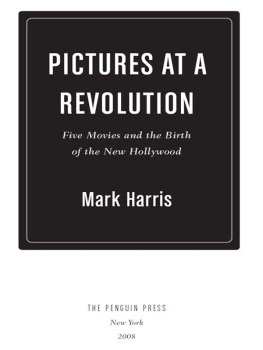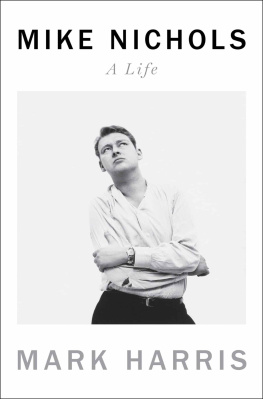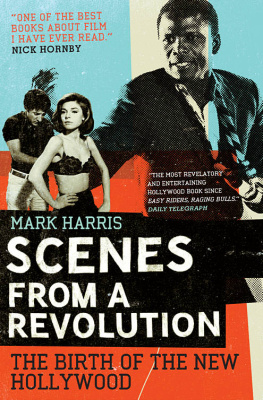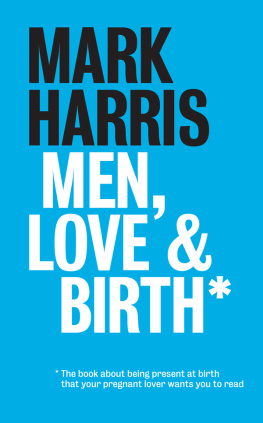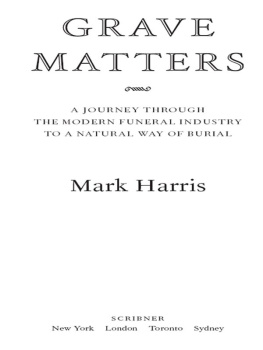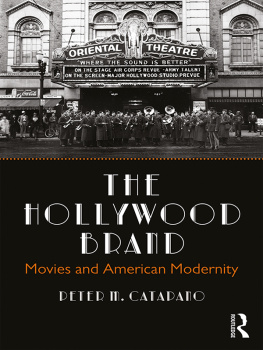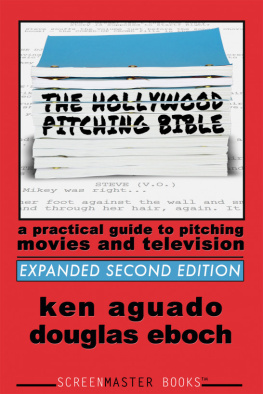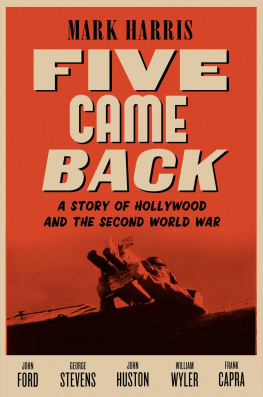Mark Harris - Pictures at a Revolution: Five Movies and the Birth of the New Hollywood
Here you can read online Mark Harris - Pictures at a Revolution: Five Movies and the Birth of the New Hollywood full text of the book (entire story) in english for free. Download pdf and epub, get meaning, cover and reviews about this ebook. year: 2009, publisher: Penguin (Non-Classics), genre: Non-fiction. Description of the work, (preface) as well as reviews are available. Best literature library LitArk.com created for fans of good reading and offers a wide selection of genres:
Romance novel
Science fiction
Adventure
Detective
Science
History
Home and family
Prose
Art
Politics
Computer
Non-fiction
Religion
Business
Children
Humor
Choose a favorite category and find really read worthwhile books. Enjoy immersion in the world of imagination, feel the emotions of the characters or learn something new for yourself, make an fascinating discovery.
- Book:Pictures at a Revolution: Five Movies and the Birth of the New Hollywood
- Author:
- Publisher:Penguin (Non-Classics)
- Genre:
- Year:2009
- Rating:4 / 5
- Favourites:Add to favourites
- Your mark:
- 80
- 1
- 2
- 3
- 4
- 5
Pictures at a Revolution: Five Movies and the Birth of the New Hollywood: summary, description and annotation
We offer to read an annotation, description, summary or preface (depends on what the author of the book "Pictures at a Revolution: Five Movies and the Birth of the New Hollywood" wrote himself). If you haven't found the necessary information about the book — write in the comments, we will try to find it.
Pictures at a Revolution: Five Movies and the Birth of the New Hollywood — read online for free the complete book (whole text) full work
Below is the text of the book, divided by pages. System saving the place of the last page read, allows you to conveniently read the book "Pictures at a Revolution: Five Movies and the Birth of the New Hollywood" online for free, without having to search again every time where you left off. Put a bookmark, and you can go to the page where you finished reading at any time.
Font size:
Interval:
Bookmark:
*Woodfall was a British production company founded by Tony Richardson and John Osborne; between 1958 and 1963, it produced Look Back in Anger, The Entertainer, Saturday Night and Sunday Morning, A Taste of Honey, The Loneliness of the Long Distance Runner , and Tom Jones.
*Ford replaced her with Anne Bancroft.
* Hal Ashby had a similar experience during production of In the Heat of the Night , when he went to see another Fox epic, John Hustons The Bible. Great God in Heaven, he wrote to Norman Jewison, I hope we never kid ourselves into trying something like that.
* Ingmar Bergman was an admirer of Penns work on Bonnie and Clyde , but he disapproved of Penns decision to shoot in color. Theres a sensual erotic charm in color, when properly used, he said. But I think color spoils a film like Bonnie and Clyde. That was a film, if any, which ought to have been shotin coarse-grained black-and-white tones. At the time of his remark, Bergman had not yet shot a color movie. (Bergman, quoted in Bergman on Bergman , by Stig Bjrkman, Torstenn Manns, and Jonas Sima, translated by Paul Britten Austin [New York: Touchstone/Simon & Schuster, 1973], p. 227.)
* In 2007 terms, the films total cost would have been in the neighborhood of $190 million.
Coppolas assistant on the movie was twenty-three-year-old film school student George Lucas, whose first film, then called THX 1133-4EB , Coppola had promised to produce if Finians Rainbow turned out to be a hit. If suddenly they dont want me, Coppola told reporter Joseph Gelmis just before Rainbow opened, then George has got a problem.
* In the movies one famous gaffe, Benjamin is shot driving in the wrong direction on the bridge.
* Jewisons relationship with the Mirisch Company was friendly but often tense; the original contract the company offered him to direct In the Heat of the Night had so many points that were objectionable to him that he didnt officially sign the deal to make the movie until it had already been in theaters for a month. Jewison ultimately agreed to a salary of $200,000 plus a share of the profits.
*Punkys Dilemma, Overs, and a completed version of Mrs. Robinson with revised lyrics all appeared on the duos 1968 album, Bookends.
*A couple of years later, Hal Ashby stuck a joke about what an easy out the movie provided for its white audience into his Harlem comedy, The Landlord , when Lee Grant, playing an upper-middle-class suburbanite horrified that her son is engaged to a black woman, tries to prove to him that shes not a racist by saying, Didnt we all go see Guess Whos Coming to Dinner together?
*The National Society was, for years, dominated by critics for whom Bergman could do no wrong; the group gave him its Best Director prize again the following year for Shame and Hour of the Wolf , and two years after that for The Passion of Anna.
*Starr says he was at the meeting as well, although neither Jones nor Benton recalls his presence, and Joness notes from the time strongly suggest he is misremembering, conflating the meeting with the earlier lunch at the Algonquin.
*Simon also accused Mike Nichols of filling the movie with little New York Jewish touches, although the lines he flagged as sounding inappropriately Jewish came directly from Charles Webbs novel.
*Coles was referring to Johnsons January 17, 1968, State of the Union address, in which he said, Our nation is accomplishing more for its people than has ever been accomplished before. Yet there is in the land a certain restlessnessa questioning.
*Although one recent biography of Beatty has suggested that Feldman also hurt Beattys pride by reminding him of your money problem, what Feldman actually wrote was you too must be mindful of our economic and money problemshe was warning Beatty that, given his history of balkiness and last minute departures from projects, he expected him to keep his word and show up on time for Pussycat s September 1964 start date.
*Although the spring of 1965 had brought the start of anti-Vietnam teach-ins and the first major antiwar protest in Washington, D.C., the war was not, at that point, on the political agenda for Hollywood, which was concentrating almost all of its activist efforts on the civil rights movement and on individual political campaigns.
*Rebner would go on to serve as script supervisor on both In the Heat of the Night and The Graduate.
*After six years of waiting, Truffaut was finally able to start shooting Fahrenheit 451 in January 1966; after its indifferent reception, he never directed another film in English.
*In his memoir The Measure of a Man , Sidney Poitier writes that Silliphants script originally called for Tibbs to respond to Endicotts slap with a disdainful stare and then walk out and that he insisted to Walter Mirisch that Tibbs return the slap instantly. But the scene Poitier rejected may have only been an idea that was discussed, since the second slap appears to have been in Silliphants screenplay as early as its first draft.
* Goornicht is Yiddish for nothing; Newley was punningly translating the title.
*The sexuality of Hepburn and, especially, Tracy remains a matter of controversy. In Kate: The Woman Who Was Hepburn (New York: Henry Holt, 2006), William J. Mann gives a scrupulously researched and balanced account of Hepburns relationships with women and reports that Tracy may have had sex with men; the vehement disdain with which this possibility was greeted by some critics says much about the persistence of romantic embellishment that attaches itself to the history of Hepburn and Tracy and about the difficulty of sorting out fact, fantasy, and self-invention in their lives, especially since Hepburn herself, as she got older, proved to be such a deft retailer of all three.
Five Movies and the Birth
of the New Hollywood
THE PENGUIN PRESS
New York
2008
THE PENGUIN PRESS
Published by the Penguin Group
Penguin Group (USA) Inc., 375 Hudson Street, New York, New York 10014, U.S.A. Penguin Group (Canada), 90 Eglinton Avenue East, Suite 700, Toronto, Ontario, Canada M4P 2Y3 (a division of Pearson Penguin Canada Inc.) Penguin Books Ltd, 80 Strand, London WC2R 0RL, England Penguin Ireland, 25 St. Stephens Green, Dublin 2, Ireland (a division of Penguin Books Ltd) Penguin Books Australia Ltd, 250 Camberwell Road, Camberwell, Victoria 3124, Australia (a division of Pearson Australia Group Pty Ltd) Penguin Books India Pvt Ltd, 11 Community Centre, Panchsheel Park, New Delhi110 017, India Penguin Group (NZ), 67 Apollo Drive, Rosedale, North Shore 0632, New Zealand (a division of Pearson New Zealand Ltd) Penguin Books (South Africa) (Pty) Ltd, 24 Sturdee Avenue, Rosebank, Johannesburg 2196, South Africa
Penguin Books Ltd, Registered Offices:
80 Strand, London WC2R 0RL, England
First published in 2008 by The Penguin Press,
a member of Penguin Group (USA) Inc.
Copyright Mark Harris, 2008
All rights reserved
Library of Congress Cataloging-in-Publication Data
Harris, Mark.
Pictures at a revolution: five movies and the birth of the new Hollywood/
Mark Harris.
p. cm.
Includes bibliographical references and index.
ISBN: 978-1-1012-0285-2
1. Motion picturesUnited StatesHistory. I. Title.
PN1993.5.U6H37 2008
791.43097309045dc22
2007032633
Without limiting the rights under copyright reserved above, no part of this publication may be reproduced, stored in or introduced into a retrieval system, or transmitted, in any form or by any means (electronic, mechanical, photocopying, recording or otherwise), without the prior written permission of both the copyright owner and the above publisher of this book.
The scanning, uploading, and distribution of this book via the Internet or via any other means without the permission of the publisher is illegal and punishable by law. Please purchase only authorized electronic editions and do not participate in or encourage electronic piracy of copyrightable materials. Your support of the authors rights is appreciated.
Font size:
Interval:
Bookmark:
Similar books «Pictures at a Revolution: Five Movies and the Birth of the New Hollywood»
Look at similar books to Pictures at a Revolution: Five Movies and the Birth of the New Hollywood. We have selected literature similar in name and meaning in the hope of providing readers with more options to find new, interesting, not yet read works.
Discussion, reviews of the book Pictures at a Revolution: Five Movies and the Birth of the New Hollywood and just readers' own opinions. Leave your comments, write what you think about the work, its meaning or the main characters. Specify what exactly you liked and what you didn't like, and why you think so.

